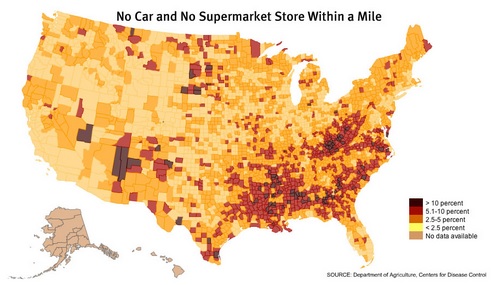The Truth about Food Insecurity
TEDxWilmingtonWomen
Nutritionist Clancy Cash Harrison debunks some popular myths behind food insecurity
, revealing the hidden causes - and actual solutions that are making a difference. A catalyst for social change, Harrison challenges assumptions about hunger in the US.
|
Is Food Insecurity a Problem on Campus?
College students are interviewed about how food insecurity is a major problem for some of their peers on campus. This is extremely worrisome considering how important a healthy diet is for good academic performance. Researchers believe this to be a growing problem because of the increase in tuition and the high volume of low-income and first generation students who do not have the financial resources and/or family financial support to balance school and necessities.
|
Military Families & Hunger
NBC News in San Diego, California,
interviewed military families in 2014 about their personal struggles with food insecurity. As of 2014, 25% of US military families were seeking food aid from food pantries and other charitable programs across the country. Although enlisted soldiers receive tax-free allowances for basic needs, many are still struggling to pay for necessities. According to experts, there are various reasons this population is struggling, including low pay, proor financial planning by junior soldiers, and the high cost of living in some states. Experts also note that it is difficult for soldiers' partners to hold steady jobs amid frequent transfers and deployments. For veterans, the transition to civilian life and, for some, the need to live on low disability pay or retirement funds, can result in food insecurity.
|
|
Stay Connected!


|
|
 |
|
Food Insecurity in the U.S.
Food Insecurity
is defined by the United States Department of Agriculture (USDA) as t
he "limited or uncertain availability of nutritionally adequate and safe foods or limited or uncertain ability to acquire acceptable foods in socially acceptable ways." There are four different food security categories one could find themselves in. The first is referred to as "high food security," and these households have no issues with accessing nutritionally adequate and safe food. Households with "marginal food security" have problems at times with access to adequate foods, however,
quality, variety, and quantity of their food intake were not substantially reduced. "Low food insecurity" households are ones that do experience a reduction in the quality, variety, and desirability of their diets, but the quantity of food intake and normal eating patterns were not substantially disrupted. Lastly, "very low food security" households would be described as, at times during the year, eating patterns of one or more household members were disrupted and food intake reduced because the household lacked money and other resources for food.
The Numbers
Even though the issue of food insecurity is decreasing in the US, the numbers for 2016 are essentially unchanged from the previous year, with 12.3% (15.6 mil households) classified as living in low or very low food secure households. The number of US children affected by food insecurity at some point in the year is staggering, with almost 20% of food insecure households (3.1 mil households) having children living in the home in 2016.
Food Deserts 
A "food desert" is a geographical area where access to healthy foods such as fresh fruits, vegetables, and whole grains are either limited or nonexistent. This is heavily prevalent among rural and/ or impoverished areas, and the Southeast has some of the highest concentrations of food deserts. Unfortunately, the foods that are for purchase in food deserts are from local corner stores and gas stations, which are heavily supplied with processed foods and other unhealthy options. Not having access to healthy, adequate food is an immediate risk factor for preventative diseases and obesity.
For more information on the topic and to find where there are food deserts in your state, follow this link.
|
Food Assistance
T
here are various food assistance programs available to help folks who are struggling to keep consistent access to adequate food.
These programs
offer assistance to children, the elderly, and low-income families.
SNAP
The Supplemental Nutrition Assistance Program is a federal nutrition program that helps with the Americans struggling with hunger and the budget of healthy food. It was formally known as food stamps. This program has notoriously been criticized by many Americans who feel the people who are benefitting from it, are misusing it. MomsRising, a group that takes on critical issues that moms, children and families face, wrote an article that helps to debunk the
myths about SNAP and the families that use it.
Issues with SNAP
A research study at North Carolina State University found that SNAP only covers "43-60 percent of what it costs to consume a diet consistent with the federal dietary guidelines for what constitutes a healthy diet". A link to the article and the study can be found
here.
|
| Have Thoughts to Share? Write For Our Blog! Have you seen food insecurity in your community? Are there innovative approaches that are being tried to address it? Tell us your story.
We'd love to here from you! Share your thoughts by writing for our blog. Click here for more information. |
|
|